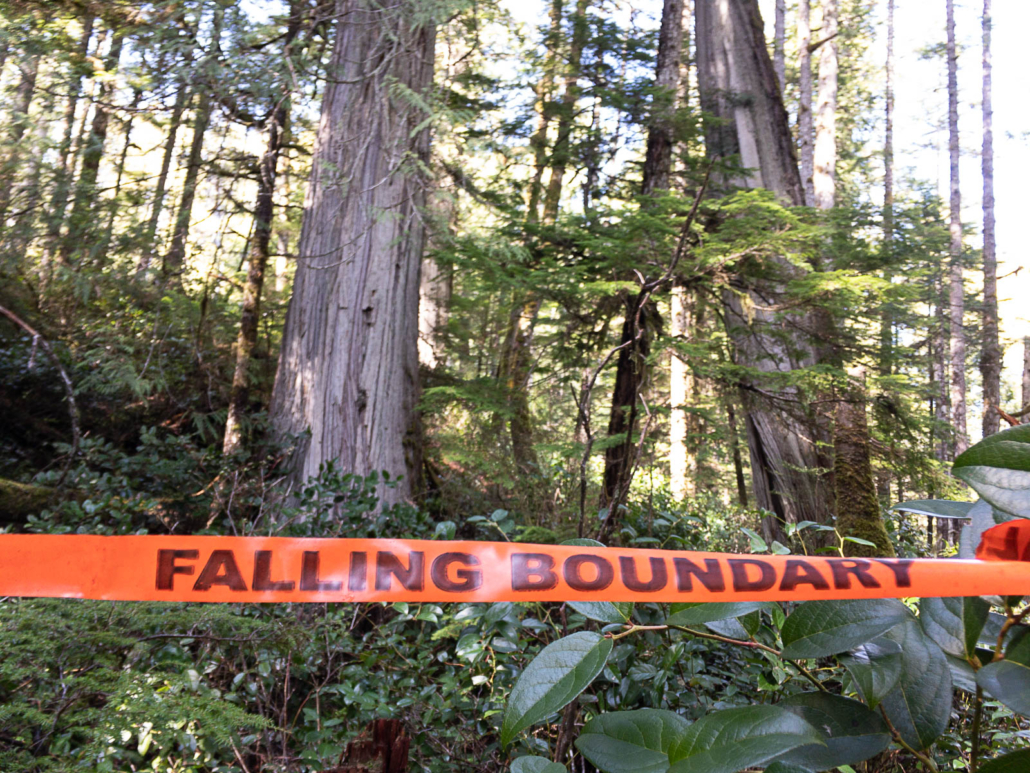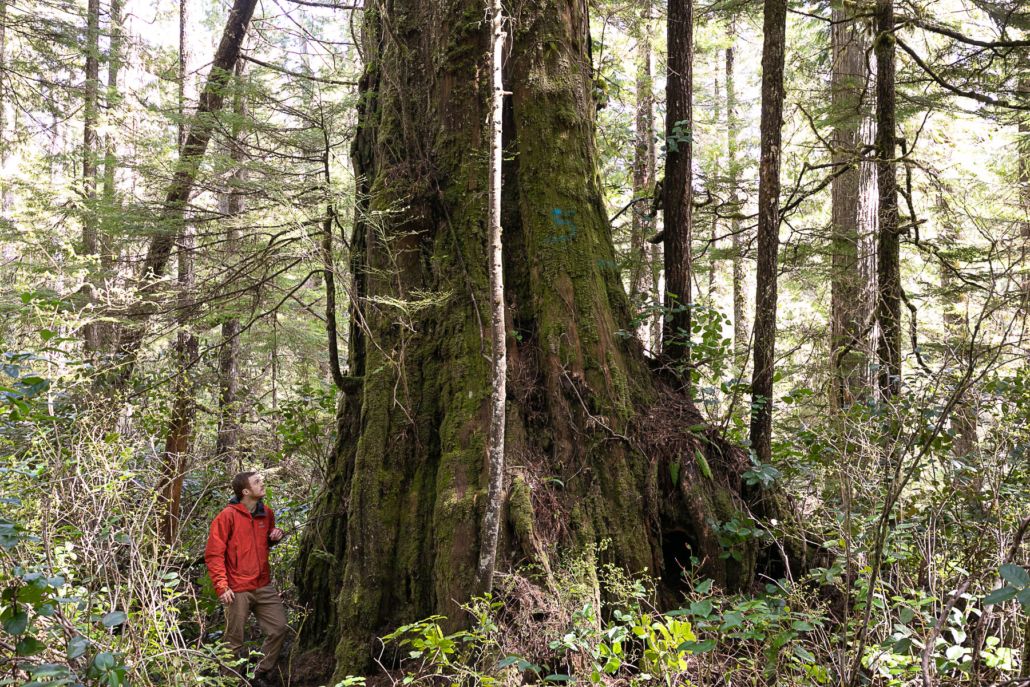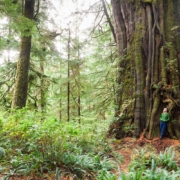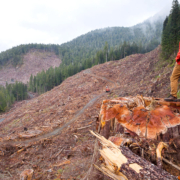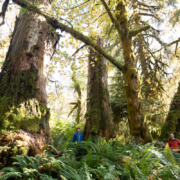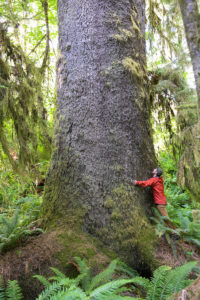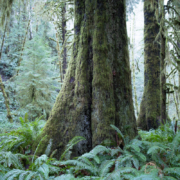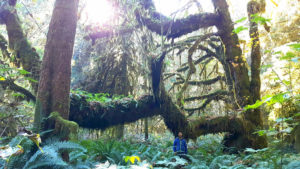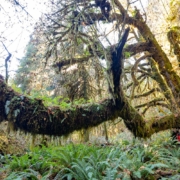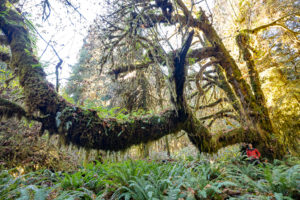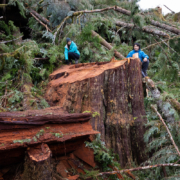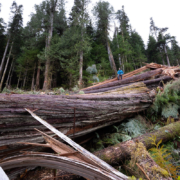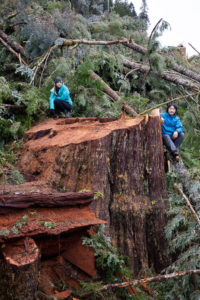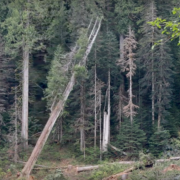New Old-Growth Clearcut Mars the Scenery from the Popular Gordon River Bridge at Avatar Grove
Before-and-After Photos Reveal Logging Destruction on Edinburgh Mountain, a “Hotspot” of Exceptional Old-Growth Forest near Port Renfrew
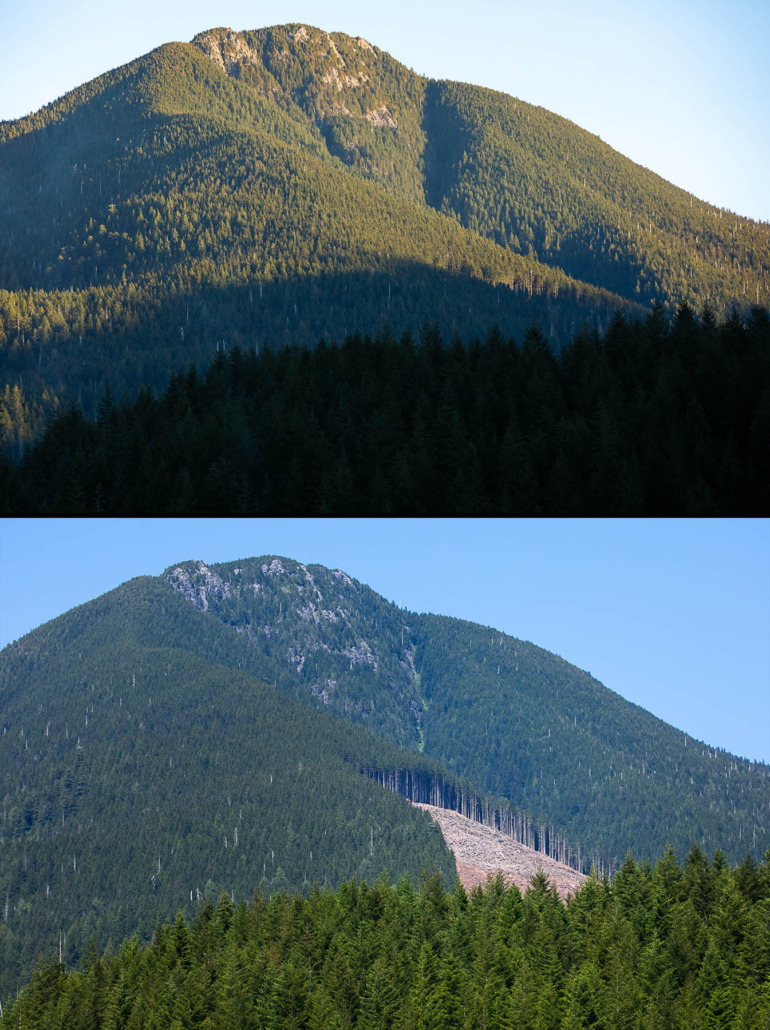
Port Renfrew, BC – Old-growth clearcutting approved by the NDP government has now marred the scenic view from the popular bridge over the Gordon River by the Avatar Grove, one of the most popular nature tourism destinations in BC. Before-and-after images taken by conservationists with the Ancient Forest Alliance highlight the destructive impacts of recent clearcut logging by the Teal Jones Group on Edinburgh Mountain, a “hotspot” of high conservation, scenic, and recreational value near Port Renfrew on Vancouver Island. The photos, taken before logging commenced and then after most of the clearcutting was completed, reveal the felling of exceptional ancient forest, including giant redcedars and rare, ancient Douglas-fir trees within a 15.6 hectare cutblock.
“These images provide a glimpse into the shocking situation that’s playing out all over BC’s south coast,” stated Ancient Forest Alliance campaigner and photographer TJ Watt, who captured the images. “Old-growth forests once teeming with life and some of Canada’s largest trees are being destroyed, never to be seen again in our lifetime. The logging on Edinburgh Mountain adds to the approximately 75 hectares of ancient forest already logged by Teal Jones that has further fragmented what was once almost 1,500 hectares of stunning, intact ancient rainforest. Two new logging roads are also under construction on the mountain as we speak. To top it off, now they have started to mar the view from the Gordon River Bridge with their old-growth clearcutting, a bridge where hundreds of thousands of tourists view the scenery of what was previously a contiguous old-growth and second-growth forest canopy.”
The clearcutting came to within approximately 50 feet of an enormous Douglas-fir tree, tossing trees and debris around its base. The giant tree measures 33’9″ft (11.4m) in circumference or 10’8″ft in diameter, making it the sixth-widest Douglas-fir in Canada according to the BC Big Tree Registry (seventh widest when including the Alberni Giant in the Nahmint Valley), and is not protected.
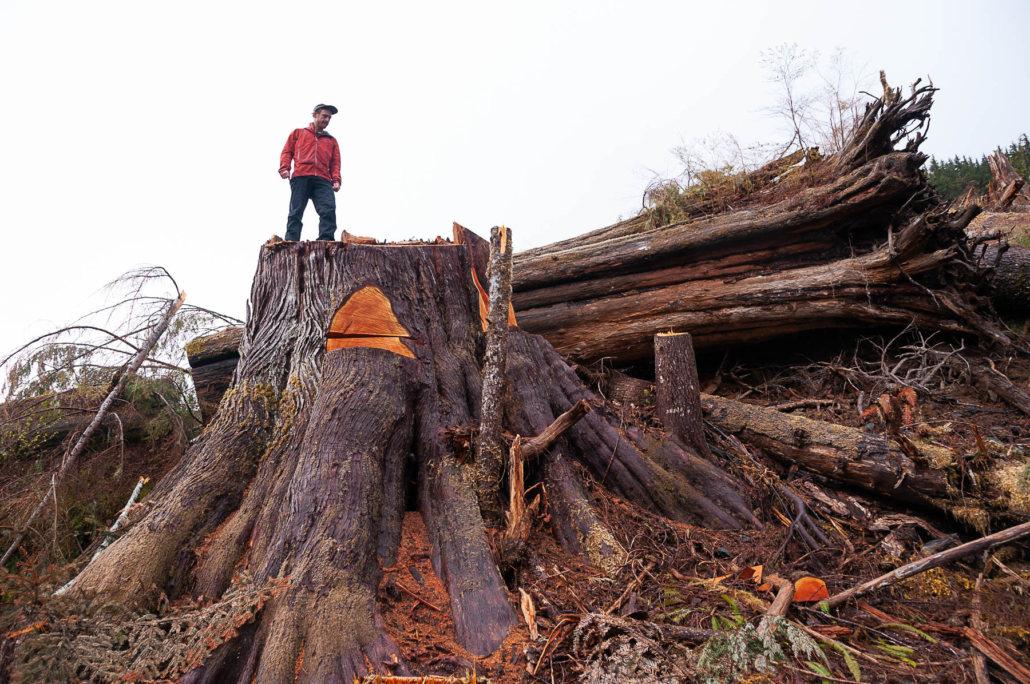
Edinburgh Mountain Ancient Forest, as it’s known by conservationists, located in Pacheedaht First Nation territory, is home to Big Lonely Doug, Canada’s second largest Douglas-fir tree, which stands alone in a clearcut at the base of the mountain, and is important habitat for endangered northern goshawks and threatened marbled murrelets. It also contains one of the finest and most endangered lowland, valley-bottom, old-growth forests left on Vancouver Island: the spectacular Eden Grove.
The area is one of about two dozen old-growth forest “hotspots” on Vancouver Island identified by conservationists, which represent some of the island’s last remaining, exceptional, intact, and unprotected old-growth areas. Others include the spectacular Nahmint and Central Walbran Valleys, East Creek Rainforest, and Nootka Island.
“These hotspots are in need of immediate protection by the BC government,” stated Ancient Forest Alliance campaigner Andrea Inness. “Most of them are actively being logged and time is running out to prevent them from becoming tattered fragments, like the majority of Vancouver Island’s remaining productive old-growth. While the BC government assures British Columbians that they’re working on an old-growth strategy, they have yet to reveal any details and continue to send the wrong signals. In the meantime, failure to protect these old-growth hotspots will result in considerable losses in terms of biodiversity, ecological processes, opportunities for tourism, and First Nations cultural values, and could spark significant conflict.”
In the case of Edinburgh Mountain, significant opportunities are lost with each cutblock that’s logged, including potential tourism revenues for the nearby town of Port Renfrew, which has been dubbed the Tall Tree Capital of Canada having capitalized on the outstanding old-growth forests and record-sized trees in the region.
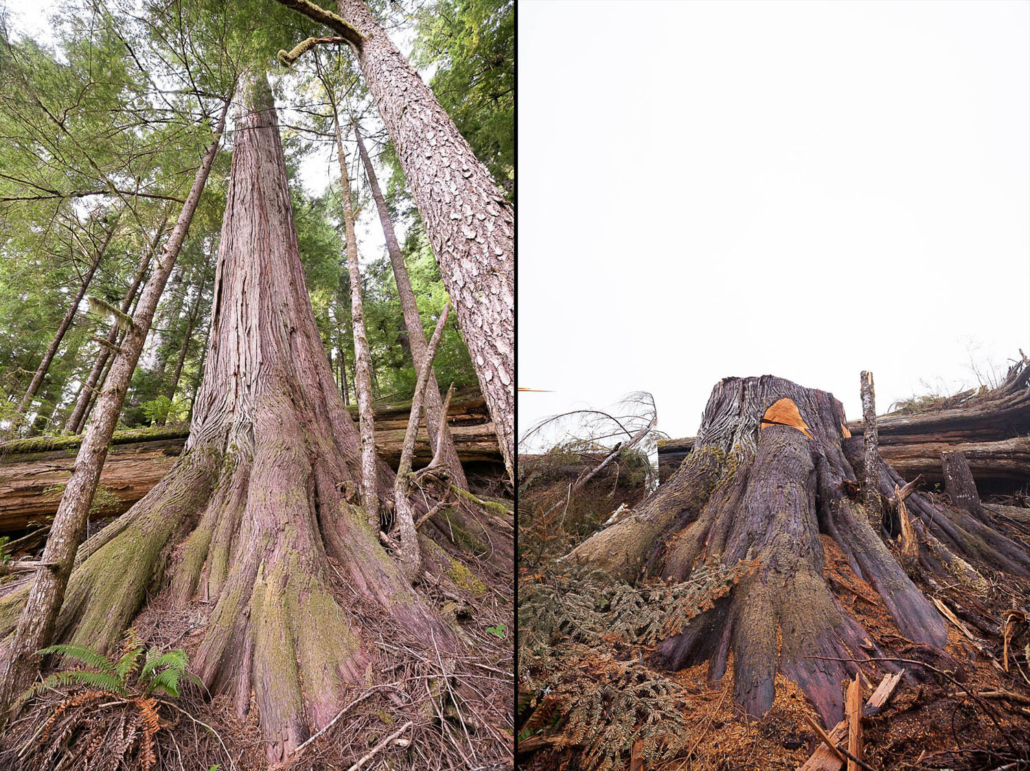
“It’s frustrating to see the BC government’s outdated forest policies threaten Port Renfrew’s growing tourism economy,” stated Watt. “Thousands of tourists come to see Renfrew’s spectacular old-growth forests and ancient giants each year. The destruction of Edinburgh Mountain undermines the town’s image as an eco-tourism destination, particularly because it’s so visible. While driving along the Gordon River bridge on the way to Avatar Grove, where you once saw a beautiful, fully intact old-growth forest on the mountainside, there’s now a big ugly clearcut that spoils the view. Tourists must shake their heads when they see how BC manages its globally rare old-growth forests.”
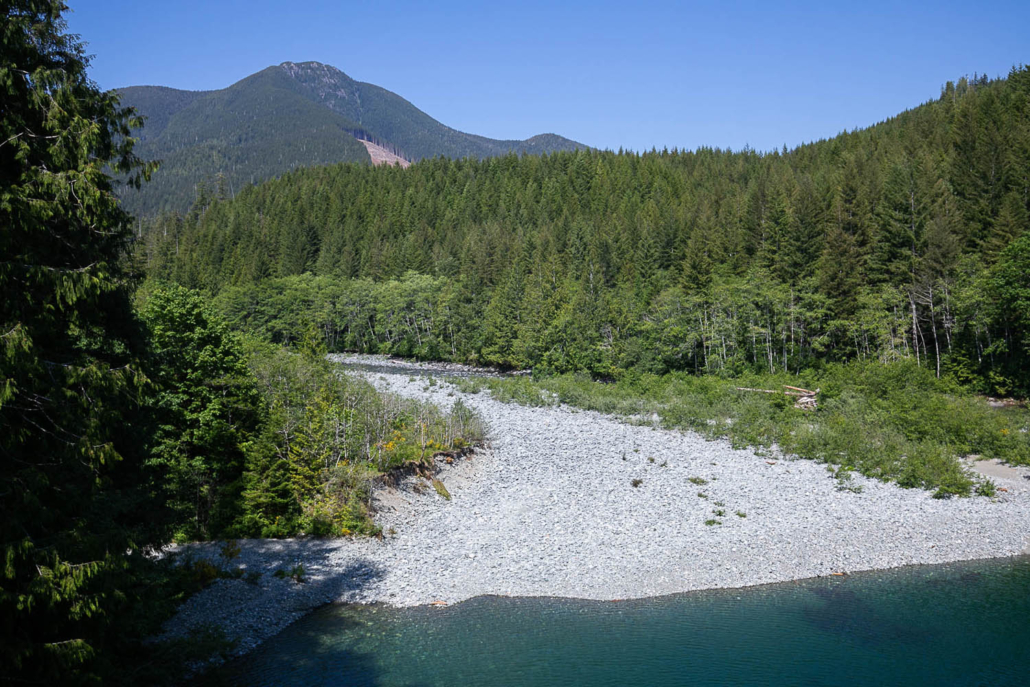
“The NDP government has an economic and ecological imperative to cultivate a forest industry for the future that supports sustainable jobs and conserves the many values ancient forests provide like biodiversity, carbon storage, cultural values, and clean water,” said Inness. “The Ancient Forest Alliance, along with other conservation groups and the BC Greens, are calling on the NDP government to take immediate action to protect old-growth hotspots while there’s still time and develop long-term, science-based solutions for BC’s endangered old-growth forests while supporting the sustainable economic diversification of First Nations communities whose unceded territories these are.”
“Meanwhile, the NDP government needs to facilitate a shift to a sustainable, value-added, second-growth forest industry using incentives and regulations to phase out raw log exports and support retooling of mills to handle second-growth trees.”
“We have a global responsibility to safeguard BC’s ancient forests, given the climate emergency and unprecedented global biodiversity decline that we’re faced with. A shift to a science-based approach that also maintains forestry jobs is entirely possible. It just takes political leadership.”
Background Information
Old growth forests are integral to British Columbia for ensuring the protection of endangered species, climate stability, tourism, clean water, wild salmon, and the cultures of many First Nations. They have unique characteristics that are not replicated by the second-growth forests they’re replaced with and are a non-renewable resource under BC’s forest system, where forests are logged every 50-80 years, never to become old-growth again.
The BC government often states that 520,000 hectares of old-growth forests are protected on Vancouver Island and will never be logged and that 55 percent of the old-growth on BC’s coast is protected, but these figures are misleading. These figures include vast areas of low-productivity forest – stunted, marginal forests that grow at high elevation or in bogs and are therefore at low to no risk of being logged. They also leave out enormous swathes of largely cut-over forests on private lands, which make up more than a quarter of Vancouver Island and which are largely managed under provincial authority. Finally, the BC government fails to consider how much old-growth has already been logged on Vancouver Island: almost 80% of the original productive old-growth forest and over 90% of the low elevation, high-productivity stands where the largest trees grow. Only about 8% of Vancouver Island’s original old-growth forests are protected in parks and Old Growth Management Areas.
For more information, see our December 2018 media release marking the commencement of the logging on Edinburgh Mountain by Teal Jones Group: https://16.52.162.165/new-logging-operations-underway-on-edinburgh-mountain-an-old-growth-forest-environmental-hotspot-near-port-renfrew-on-vancouver-island/

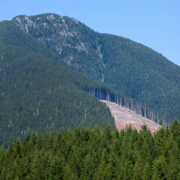
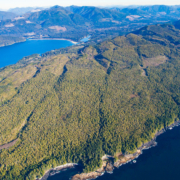
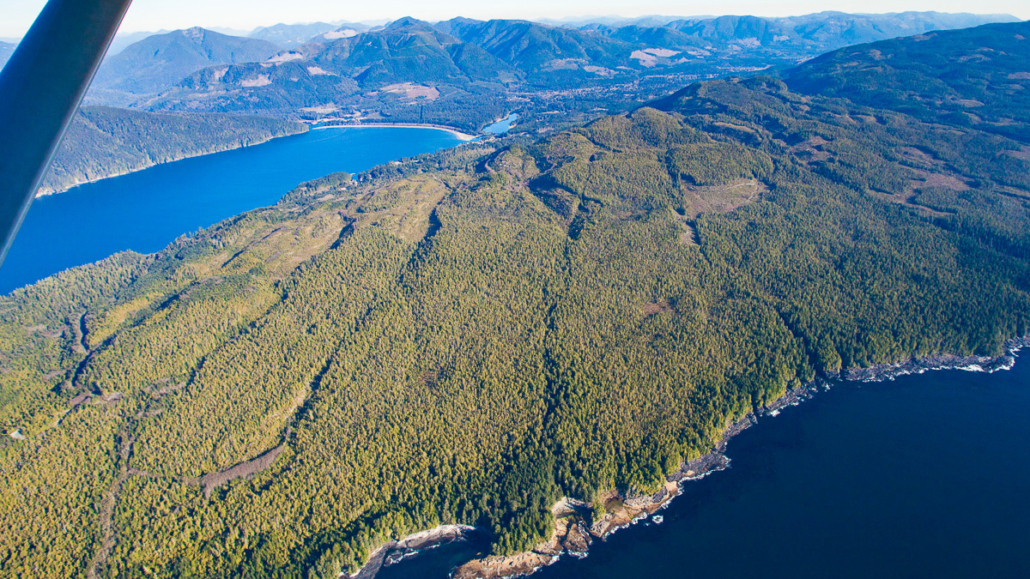 An aerial photo of the old-growth forests where B.C. Timber Sales has seven pending cutblocks totalling 109 hectares. Juan de Fuca Provincial Park is along the coast and the town of Port Renfrew in the background.
An aerial photo of the old-growth forests where B.C. Timber Sales has seven pending cutblocks totalling 109 hectares. Juan de Fuca Provincial Park is along the coast and the town of Port Renfrew in the background.